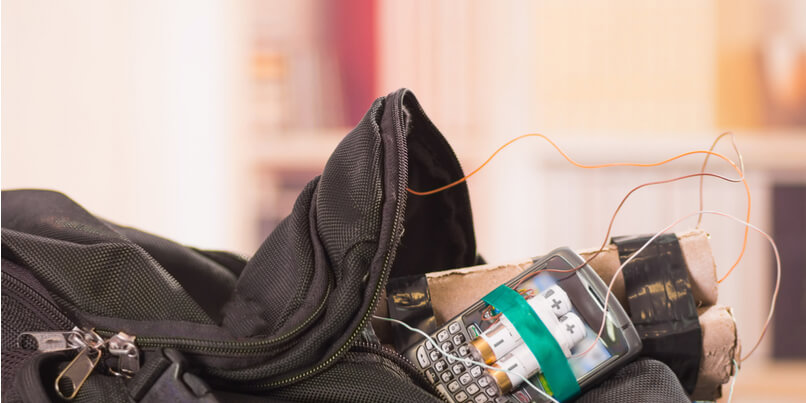 Argon Electronics will be among the global CBRNe and HazMat professionals at the eleventh annual CBRNe Convergence which takes place in Orlando, Florida, from November 6th to 8th, 2018.
Argon Electronics will be among the global CBRNe and HazMat professionals at the eleventh annual CBRNe Convergence which takes place in Orlando, Florida, from November 6th to 8th, 2018.
This year's event brings together leading world experts in the fields of WMD, chemical attacks, biological weapons and HazMat - with the programme of activities tying together on the theme of the merging of military and civilian response to CBRNe and IED threats.
The conference programme, which has been planned by Gywn Winfield, Editor of CBRNe World magazine, will include plenary sessions on the Taza incident (the Iraqi town hit by homemade IS mustard gas rockets in March 2016) and on the increased use of sophisticated chemical weapons for terrorism.
There will also be a series of presentations, divided into ten streams, and covering key topics including foreign and domestic extremism, narcotics, CBRNe situational awareness, radiological threats, integrated response and decontamination.
CBRNe and HazMat experts
Confirmed speakers for the 2018 CBRNe Convergence include:
- Chris Franck, Special Agent Bomb Technician, FBI Tampa - who will speak on the challenges associated with weapons, homemade explosives and radiological materials that were uncovered in response to a double homicide/hostage scenario in Tampa Florida.
- Lt. John Cassidy, Hazardous Material Co. 1, FDNY - to dicuss how National Fire Protection Association (NFPA) training and personal protective equipment (PPE) standards have evolved to meet specific response needs.
- Hamish de Bretton-Gordon, Managing Director CBRN, Avon Protection - exploring the implications of the nerve agent attack on UK soil and the terrorist threat to mainland USA, with specific reference to posture, dress states, detection, decontamination and agility.
- SA Watt, Clan Lab Coordinator, LA Field Division, DEA - talking on the state of fentanyl in the US, where we can expect to see it over the next few years, how the DEA processes fentanyl labs and tactical considerations that need to be borne in mind when entering a lab.
- Chris Hodge, SWA Decon Subject Matter Expert, First Line Technologies - on why decontamination chemistry matters in the destruction of chemical and biological (CB) threats, the significance of dwell time and ratio of decon formulation and the development of Point-of-Use tailored decon technologies.
- Matthijs Zuidberg, Forensic Scientist, Netherlands Forensic Institute - speaking on the development of a forensic response to CBRN incidents the use of decontamination methodologies to neutralize, kill or remove CBRN agents whilst preserving potential forensic trace material (including the use of vaporized hydrogen peroxide vapor and vacuum decontamination chambers.)
- Dr Nicie Murphy, Radiation Detection Product Manager, FLIR Systems - discussing how instruments can directly determine an individual's responsiveness to a radiological threat; and the importance of reliable radiological and nuclear countermeasures equipment in ensuring confident and accurate response.
CBRNe Convergence Workshops
Two pre-conference workshops will take place on November 6th - each looking at different elements of the response spectrum:
CBRNe High Threat Exercise - Gareth Roberts and Christopher Thomas from the UK South Wales Police will highlight the importance of training and exercising to achieve successful outcomes in real-life situations.
Both are regularly involved in counter terrorist investigations and have been operationally deployed to multiple high threat CBRNe scenes involving chemical manufacture, explosives and illicit narcotics.
This workshop is anticipated to be of particular interest to law enforcement, crime scene investigators, HazMat technicians and military CBRNe units.
After the Smoking Crater - Allan Cordwell and Zoe Rutherford from the UK National Health Service (NHS), together with Orlando's Chief Medical Examiner Dr. Joshua Stephany, will speak on how inter-operability and training can improve response to large-scale terrorist events that involve mass fatalities.
The workshop will include first-hand accounts of three major incidents - including how the attacks unfolded, the response, the subsequent day-to-day impact on personnel and how response capabilities have evolved as a result of the incidents.
This session is expected to be especially relevant to health professionals, pathologists, mortuary managers and law enforcement.
Demonstrations of Argon training systems
Argon Electronics will be demonstrating a selection of instrumented training systems that have been designed to support the understanding of contamination avoidance, monitoring and control, reconnaissance and search and survey training.
These will include: simulators for the Smiths LCD3.2e and LCD3.3, the Mirion/Canberra RDS100/PDR77 Ludlums Simulator Probes and the EPD Mk2 as well as a display of the app-based tabletop and field emergency planning system PlumeSIM-SMART.







